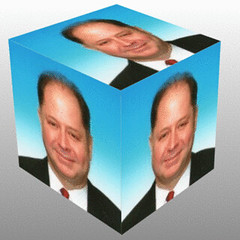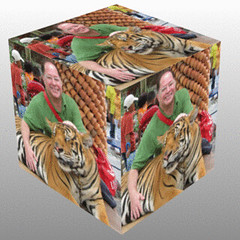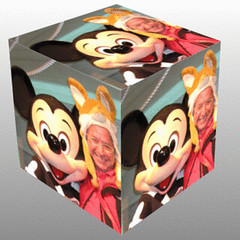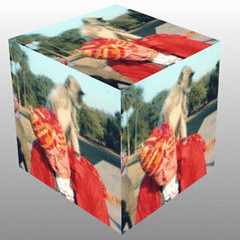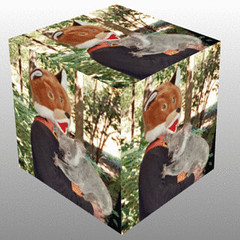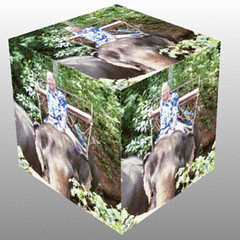Alan Moore is the master of superhero universe reboots and this page, based on a series of posts, will describe his efforts, compare and contrast his reboots and finally evaluate which have been the most successful from a critical point of view. A reboot is a radical remake of an existing character in fiction. Batman Begins, Battlestar Galactica and Casino Royale are example of cinematic reboots. A reboot of Star Trek is also in the works. The following universes will be looked at including the Albion Universe, the League of Extraordinary Gentlemen, the Miracleman universe and the Watchmen universe.
I will argue that
1) Moore’s reboots always go in a darker direction than the original source material.
2) Moore adds a layer of characterization that was not present in the original material.
3) The fact that the characters are in a universe is emphasized much more than in the original source material.
4) There is almost always a comic book within the comic book.
5) Certain larger political/philosophical questions are consistently explored in Moore’s work.
The first point is not surprising since the source material is generally from the pre-1960s when comic books were aimed at readers of an average age of ten and there was code that controlled what sort topics and material could be dealt with in comic books. The second point is explained by the fact Moore as a superior writer brings characterization to a medium were characterization is generally ignored. The third point is also related to the current comic book market versus the one of the pre-1960s. Crossover issues do well on the market place. Sagas that involve all the superheroes are major events and seem to happen almost yearly these days.
Fourthly, and this is really Moore’s signature touch in almost every reboot, Moore almost always figures out a way to make the comic self-referential with the exception of the League of Extraordinary Gentlemen. There is invariably a comic book within the comic book! In some cases the source material as comic book is revealed within the story. This is the case in the Albion universe and the Terra Obscura universe. The Watchmen has a comic book within a comic book but this comic book does not point to the original source material.
Fifthly, Moore is a great writer because he often asks the political question “does the end justify the means” in a manner that is not easy to answer. Moore also explores existential questions of free will and the two questions are put together to form a larger question of what the hero should do. Being the hero in a Moore work is generally a much grayer situation than being a hero in other comic books that accept the convention of easily identified good versus evil characters and morally easy to figure out modes of action.
These posts will not reiterate the plots of each series, except as necessary for critical purposes, since this has already been done at Wikipedia and this link will be supplied with each post. Rather, the purpose of these posts is to provide a critical overview of all of Moore’s reboots using a consistent framework.
The main superheroes of the Albion universe include Bad Penny, Brian’s Brain, Captain Hurricane, Charlie Peace, the Cloak, Cursitor Doom, the House of Dolmann, the Dwarf , Eagle-Eye, Faceache, Grimly Feendish, Janus Stark, Jason Hyde, Kelly’s Eye, Martha’s Monster Make-Up, Mytek the Mighty, Queen of the Seas, Robot Archie, Rubberman, the Spider, Tri-Man and Zip Nolan. Alan Moore’s daughter is credited with being one of the creators of the Albion Universe and I am sure this is the case but the hand of the master is clearly in evidence. The Albion universe highlights the ability of Alan Moore to take the most sketchy superhero source material and raise the quality of this material to another level. Chronologically this is Moore’s latest reboot and is only dealt with first because these posts are organized alphabetically. Moore took a group of superheroes published by Fleetway press in the 1960’s in Great Britain and gave them new life. These comic books were never distributed in the US so they would be totally unfamiliar to US audiences and even readers in England.
I remember talking to a British friend of mine about the series after buying and reading the graphic novel that collected the series. My friend is a fellow comic book fanatic and he had no idea what I was talking about despite my descriptions of the various characters. After he borrowed the graphic novel from me he said “Yeah, yeah. I read some of these characters back when I was a kid but totally forgot about them”. I have spent time in London and spent a lot of my time in comic book shops, to the chagrin of my wife at the time, ex-wife now, perhaps there is a relation between the two events, and of course was more interested in stuff from England than stuff from the US. The people working in the comic book stores pointed me to Judge Dredd stuff that is easily available in the US in the form of graphic novel reprints. I didn’t run into any Fleetway stuff back then and I am a fairly obsessive person when it comes to finding weird comic books.
I was vaguely aware of the Fleetway stuff since as a kid in Venezuela in the 1960s I was friends with a kid from England and read some of that stuff in his house. The publication quality was far below US standards. A lot of the strips were black and white! They were in tabloid format. The covers were on regular paper rather than slick paper! Still, like Moore I have always had an interest in obscure super hero universes, the more obscure the better, even as a youth and did read his collection avidly.
Some of the original material from the 1960s is also included in the graphic novel and this helped me dredge up memories of those comic books. As I have stated in the introduction, comic books of that time period were much more innocent and light hearted than comic books today. I have started collected Marvel Essentials and DC Showcase editions which reprint a lot of stuff I read as a kid in the sixties, and going down memory lane is fun, but I am often amazed I could be entertained by such simplistic and juvenile material but then have to remind myself that I was a juvenile back then! Even by US sixties standards the Fleetway stuff is even more light hearted and many of the strips would have to classified as comedy rather than drama.
In particular, Captain Hurricane has undergone a radical reboot! The original sixties Captain Hurricane was more like a Popeye character than a super hero. In Moore’s reboot, Captain Hurricane has been turned into a dark British version of Captain America’s super soldier story. Captain Hurricane is the only successful subject of an experimental procedure to create a super soldier that killed over 300 other subjects. Furthermore, the process turned Captain Hurricane into a homicidal maniac who during rages is capable of killing whole platoon of Nazis with his bare hands in the most brutal manner imaginable. Alan Moore does some other interesting things with the other characters.
Rubberman is a major character in the Albion universe and as far as I can tell he was an obscure character in an obscure superhero universe and I think his importance in the Moore reboot is indicative of a feeling on Moore’s part that super stretching is an important super power that is generally underestimated except by the greats. The Elongated Man and Plastic Man are prominent in Frank Miller’s, The Dark Knight Strikes Again. Frank Miller is the second greatest comic book writer ever, after Moore, but a distant second in my opinion. Batman states that Plastic Man has the power to kill us all i.e. Batman and Elongated Man together. Batman is a first tier super hero and a master of assessing combat abilities so this comment is very interesting. Batman is talking for Miller and stating this type of power can be very dangerous. Most writers have not taken super stretching very seriously and have exploited this power for comic effect rather than thinking this power gives great durability, a means of escape from any prison and the ability to inflict great harm. Plastic Man has generally been treated as a funny character and not as a dangerous character. Elastic Lad, Jimmy Olsen’s super hero persona, generally had funny adventures. Elongated Man engaged in amateur sleuthing and fought common criminals rather than super villains except when teamed up with the Flash. Superheroes with super stretching as a power generally don’t get much respect. The big exception is Mr. Fantastic of the Fantastic Four who is a heavy weight. I agree with Moore that super stretching is probably the second most underestimated super power.
The most underestimated super power is super speed. A common “what if fight” is between the Hulk and Superman. If Superman can dodge bullets then he can certainly dodge blows from the Hulk or from anyone without super speed yet he never does this when fighting opponents with super strength but without super speed. Superman should be able to dodge every blow by the Hulk and deliver every blow he aims at the Hulk but I guess this would not be a very fun comic book battle.
Part of the story involves the main character trying to track down old comics that are hard to find. We later learn that the comic books actually portray real events! In a twist one of the funnier and more juvenile comic books portrays, perhaps the most dark and evil character in this universe. This is a consistent characterization thread. There is the character as portrayed in the comic books and the actual character. There is also a Machiavellian angle. The British government employed the Spider to round up or destroy all the super powered heroes and villains and this same government then betrayed the Spider. The surviving heroes and villains are put in common gulag rather than separated since as far as the government is concerned they are all guilty of the same sin of creating disorder. Moore is a student of power politics and this is reflected in many of his works.
V is for Vendetta, possibly his best work after the Watchmen, explores the relationship between fascism and anarchy and is one of the most, if not the most, political mainstream comic books ever published. Is fascism justified to prevent anarchy? Do ends justify the means? The Albion series in contrast to some of Moore’s other works does not pose any deeper question and therefore cannot be put in the same league as the Watchmen and V is for Vendetta.
On the other hand, Moore’s level of characterization has never been better. Subtle differences between British and American thinking about the role of authority are explored using the conversations between the director of the gulag and a CIA agent sent from Homeland Security to evaluate the gulag’s security.
The heroes and villains are old men who have spent decades behind bars and this has affected their thinking and therefore their speech and behavior. The old men look and act like old men. Generally in comic books the younger version and the older version of the same character are indistinguishable except for the fact they are drawn differently.
There is also great use of British expressions that clearly make the reader feel they are in England based on the dialogue. Not the usual “Jolly Good Batman” banter that is so common in comic books. In Albion different characters of different social classes do speak differently as is the case in England to a greater extent than the US. Of the five superhero reboots, I would rank the Albion reboot as being first in characterization and a rank of number four of the five universes!
League of Extraordinary Gentlemen
The main “superheroes” of the League of Extraordinary Gentlemen include Allan Quatermain, Captain Nemo, Dr. Jekyll/Edward Hyde, Hawley Griffin and Mina Murray. I put quotes around the word superheroes since the question must be asked if the aforementioned characters are actually superheroes. Allan Quartermain, Captain Nemo, and Mina Murray do not have super powers but this does not mean they are not super heroes. Batman doesn’t have super powers and an archetypical superhero. Allan Quartermain and Captain Nemo are the literary grandfathers to Batman. Allan Quartermain and Captain Nemo are men of adventure that belong to the world of pulp fiction that preceded comic books. Can pulp fiction heroes be superheroes? Both types of fiction are similar. The main difference would be that comic books went a step farther and emphasized more incredible and futuristic elements due to the ability of comic books, as a visual medium, to awe young readers with incredible pictures.
By putting all these fantastic characters in a more fantastic world than they originally existed in, Alan Moore has clearly made the pulp and/or sci-fi heroes into super heroes. Alan Moore has done the opposite of the dictum of H.G. Wells, the original creator of the Invisible Man. The Invisible Man is a member of the league. H.G. Wells stated that you could write about Martians or invisible men but not invisible Martians. Comic books go in the opposite direction and if Martians are interesting then an invisible Martian like DC’s Martian Manhunter is even more interesting. Superheroes are the baroque version of science fiction and that’s one of the reasons I love my comic books!
There is no comic book within a comic book since these heroes were from books not comic books. On the other hand, Alan Moore has created a universe were all fictional literary characters imaginable coexist in a single universe. Every character in the series is from a literary piece and half the fun of reading the comic book is figuring out what work of fiction the character is from. There is also an atlas of this world in textual form that is incredibly intricate and takes universe building to another level! I suspect compiling the atlas probably took Moore more time to write than writing all the other reboots together.
There is also not a superior level of characterization in Moore’s material compared to the source material since the original material were great works of literature rather than obscure comic book universes. Moore is the greatest comic book writer ever but compared to the greats of writing period, maybe just good. Given that I am proponent of the idea that comic books are an art form that ultimately belongs next to all other art forms, this is a sorry statement.
Moore does take the original source material into a darker realm as he does in other reboots. Mr. Hyde beats the Invisible Man and then sexually assaults the Invisible Man, finally killing him! The Invisible Man had betrayed Earth to the Martians and, worse in the eyes of Hyde, hurt Mina Murray. Hyde also eats a Martian in front of the other Martians for fun and the purposes of psychological warfare. For some reason this version of events was never shown in the movie of the same name.
I do want to mention that the movie and the comic book are very different both in plot and tone. The movie is very typical, feel good, sell popcorn, movie fare. The comic book is dense with literary references and much darker than the movie. The characters in the comic book are much more fleshed out and less heroic and more human than the same characters in the movie.
Mina Murray is a person weak physically but strong of will and mind who wins the affection of Mr. Hyde, the love of Quartermain and the respect of Nemo in a way that is believable. This character was written out of the movie altogether! The only comic book character that is even vaguely similar to Mina Murray is Spiderman’s aunt May, another character whose will allows her to surpass her physical frailty. Quartermain, in contrast to the portrayal by Sean Connery in the movie, is portrayed as an old broken man that has been in the deepest slums of India smoking opium and is only saved by the strong will of Mina Murray.
The “do the ends justify the ends” question is explored again by Moore. Germ warfare is used to destroy the invading H.G. Wells style Martians. Moore rightly assumes that characters of the Victorian age would find such behavior shocking and immoral. This is before WWI and WW II desensitized us as a species to such behavior, unfortunately. Because of the strong characterization and incredible universe building, I would rank this reboot number two of the five reboots this series will examine.
The main superheroes of the Miracleman universe include Kid Marvelman, Miracleman, Miraclewoman and Young Miracleman. The Miracleman universe is the third reboot alphabetically but Moore’s first reboot chronologically. Moore did this reboot before the Watchmen that led to his ascendance as the premiere comic book writer of all time. In the sixties in Great Britain there was a superhero called Marvelman. Marvel comics book sued the English publishers and this lead to the demise of Marvelman. Marvelman never made it to the US. Years later, Moore decided to reboot Marvelman but due to the same copyright issues could not use the name Marvelman and changed the name to Miracleman.
A mad scientist working for the British government has figured out alien technology thousands of years ahead of ours and has created Miracleman, Miraclewoman and Young Miracleman. Their powers are more or less than same as Superman’s but they are in world much more like ours than Superman’s so their relative power is much higher. The beings are kept in a state of stasis and they are programmed with adventures which are the same as the adventures of the original Marvelman series. This is the first use of the comic book within a comic book that will become Moore’s trademark signature in all other reboots except in the case of the League of Extraordinary Gentlemen.
Miracleman ultimately does all the things that Superman will not even though he could. Miracleman creates paradise on Earth and guides humanity towards the next level of evolution as part of an interstellar community. The Miracleman family takes over the Earth in order to bring order at the “molecular” level and the does just that. The Miracleman family exists as a pantheon of gods sitting above humanity. This theme of super beings dealing with the fundamental issues of human existence such as worldwide pollution, bad governance and unequal distribution of resources and opportunity will later be explored in two other comic book series including Marvel’s Squadron Supreme and the Authority under DC’s imprint Wildstorm. The absurdity of Superman using his vast powers to stop bank robbers and dealing with the symptoms of human suffering rather than the causes of human material suffering if not existential suffering was identified by no less an literary giant than Umberto Ecco in his essay about Superman.
Miracleman is not only a more “realistic” version of Superman but a much darker version. If a mere mortal messes with Miracleman then this mortal can expect instant death. Gods do not suffer disrespectful mortals. Superior characterization is shown throughout the series but certain characters stand out. Miraclewoman is very different than Miracleman in attitude. She is much more positive about her condition and revels in her super powers. This is in contrast to Super Girl who is a clone of Superman who happens to have breasts in most treatments of her. Miraclewoman is smarter than Miracleman. When faced with the leader of the aliens from which their powers are derived she suggests a radical diplomatic solution. Earth will be a neutral ground where the two great powers that govern the galaxy can meet. When Miracleman is rude to Margaret Thatcher, Miraclewoman intervenes and takes some of the sting out of their coup de tat. Miracleman is a brooding character that has transcended material suffering but not existential suffering. Miraclewoman is a cheerful happy person as well as she should be given her position as the queen of the gods.
Dr. Gargunza is probably the most fleshed out mad scientist in the history of comics. Dr. Gargunza is given credit for being a genius who, as one of the aliens points out, was like a gorilla that got a hold of a camera and made technological discoveries using that camera. Miracleman has to admit that Dr. Gargunza is his father and chooses to kill him with a kiss. The kiss is given while in orbit around the Earth where there is no air so the kiss is fatal and the subsequent meteor like fall is most certainly fatal. Miracleman must kill Dr. Gargunza because his intelligence and mastery of the alien technology makes him too dangerous but Miracleman does so with regret. And don’t gods always have to kill their fathers to ascend to the top of the pantheon? Zeus must kill Chronus to fulfill his potential as a god.
Dr. Gargunza comes from the most humble beginnings in Mexico and after making a sufficient amount of pocket money, from gang activities, moves to Europe and starts a new life and seeks out the likes of Heidegger and leaves the red dust of Mexico behind him forever. Dr. Gargunza realizes from his conversation with Heidegger that the ultimate problem of human existence is death and the solution is for him to create a baby with the alien technology that is super powered and immortal. Dr. Gargunza is not driven by some desire to take over the world but a desire to survive. Dr. Gargunza is a student of animals and hunts cheetahs for fun and would argue the will to survive transcends all other morality and the ends do justify the means. Issue 15 of the series shows a Kid Miracleman rampaging through London and is generally considered some of the darkest work in comic books period. I own every issue of the Moore version of Miracleman except this one and have heard the issue is extremely gory.
I give this reboot a rank of three out of the five reboots.
The main superheroes of the Terra Obscura universe include Adam the Ape, American the Crusader, Captain Future, Doc Strange, Fighting Spirit, Fighting Yank (I), the Ghost, Grim Reap, Lance Lewis, Space Detective, the Liberator, Magnet, Miss Masque, Mystico and Princess Pantha. All the characters are based on characters that Nedor Comics published in the 1940s. Moore seems to be taking a break from his more serious works here and just wants to have some fun. The Terra Obscura gang is comic book camp at its best/worst. I get it. I wonder how many younger readers do. You have outrageous characters like Adam the Ape side by side with the Space Detective. In particular, Moore mentions the absurdity of putting Sgt. Rock side by side with the Legion of Superheroes in his article Twilight of the Superheroes. Moore makes the material a little darker in that the Terror has been killed by an evil nearly omnipotent machine and the death of major heroes really only becomes acceptable in the eighties with the death of Marvel’s Phoenix and after that becomes almost common place due to market response. The death of Superman series is the ultimate example of how market forces drive comic books rather than aesthetic logic. The fact that Superman was not actually dead didn’t stop DC from making millions from a line that was moribund even if the character was not. All in all characterization is not up to Moore’s usual standards.
Doc “Tom” Strange from Terra Obscura appears in the adventures of Tom Strong V1 #11. Tom Strong from another Earth billions of miles away. Doc Strong points out that the adventures of the heroes on Terra Obscura are described in comic books on his Earth. Tom Strong shows Doc Strange a comic book with a cover of the actual Nedor Comics source material. There is not only a comic book within a comic book but a comic book that points directly to the source material. Tom Strong is more of a pulp fiction hero and very similar to Doc Savage. Doc Strange is more similar to Superman. The two superheroes look alike and the superman version meets the pulp fiction version of itself.
The absurdity of heroes of vastly different power levels interacting in a more or less equal manner is taken to new heights. Tom Strong once fought and defeated Doc Strange using atomic gloves! The atomic gloves are basically supped up brass knuckles. Doc Strange has literally crossed billions of miles of interstellar distance over a period of decades without food, water or sleep and therefore can withstand the extreme rigors of space but can be knocked out by atomic gloves by a character that maybe has the strength of ten men! I think Moore is poking fun at the convention that any superhero stands some chance in a battle with any other superhero regardless of power levels. Daredevil fighting the Submariner and later the Hulk comes to mind.
The Wiz Kid superhero game tries to incorporate this crazy comic book logic into their minis game. I pitted the Hulk against Batman. Batman was able to knock out the Hulk with a batarang! Our group consisted of hard core D&D mini enthusiasts were such happenings are impossible and we never played the game again but later I thought about what happened and realized this is the way a comic book universe operates rather than a D&D universe.
I give this reboot a rank of five of the five reboots looked at. This means Terra Obscura is at the bottom of the pack but Moore’s worst comic book generally surpasses 99% of the comic book material out there and I would definitely recommend this series to a fellow comic book reader especially one the revels in the kitsch factor of comic books as I do.
The superheroes of this universe are only vaguely based on the originals from Charlton Comics so arguably this is not a reboot at all. The main superheroes of the Watchmen universe include Captain Metropolis, the Comedian, Doctor Manhattan, Dollar Bill, Hooded Justice, Mothman, Nite Owl I, Nite Owl II, Ozymandias, Rorschach, Silhouette, Silk Spectre I and Silk Spectre II.
Comedian resembles the Peacemaker (Charlton). Doctor Manhattan resembles Captain Atom (Charlton). Nite Owl resembles the Blue Beatle (Charlton). Ozymandias resembles Thunderbolt (Charlton). Rorschach resembles the Question (Charlton). Silk Spectre II resembles Nightshade (Charlton). This is Moore’s last universe reboot alphabetically but his second chronologically. This is the series that brought Alan Moore fame and fortune in the US.
The comic book within a comic book takes the form of a pirate comic book named Tales of the Black Freighter. A teen who happens to be at a newsstand, were the lives of the heroes intersect, is reading the comic book on the curb. We view the panels of this comic book within a comic book as the series progresses. The plot line of Tales of the Black Freighter comic book is reminiscent of the Heart of Darkness by Joseph Conrad. The comic book within the comic book also reflects the larger world’s descent into WW III and annihilation. The Watchmen’s universe is too gritty and real for us to believe that anyone will survive as they generally do in comic books. Nixon is President since he had those pesky Watergate reporters killed by the Comedian, a super hero!
Although this is never stated in so many words, there are enough references to Einstein and his thinking that one can assume Moore has probably read Einstein’s comment that good and evil are manmade constructs. Doctor Manhattan as more force of nature, than human takes this literally and departs from Earth to Mars rather than stop WW III. Dr. Manhattan is also four dimensional and shifts in and out of the present into the future and past and actually little gains the insight that past, present and future do not actually exist and therefore free will does not exist.
One of the more disturbing characters, Rosarch has an epiphany while watching dogs eat the bones of kidnapped girl and becomes a Nietzsche superman, beyond good and evil. In contrast to Dr. Manhattan, who is a Superman type superman and then some. Dr. Manhattan could easily take out Superman!
Ozymandias is a Batman type superhero. Ozymandias is a Batman type superhero that has grown up and decided that the ends do justify the means, which the Dark Knight version of Batman hints at but never delivers. Ozymandias decides to create a fake alien invader that kills millions in New York City in order to unite the world against a larger enemy. Ozymandias succeeds and thus averts WW III. The bad guy has succeeded! This doesn’t happen very much in comic books but is he really a bad guy? Ozymandias has lied to his fellow heroes, killed millions, and even killed his own servants but he did this to save the world and if fact did save the world. Do the ends justify the means?
Another aspect of the Watchmen that is different from other works by Moore is his extreme use of symbolism. The watch as symbol is used throughout the book. The watch does not just represent time and the inexorable flow of events as most readers can easily figure out. The watch also acts a secondary symbol that I think very few readers figure out. The watch is symbolic of the most important question in human existence. Is there a watchmaker? Or more broadly does “existence precede essence”. Is there an underlying karma, purpose, a plan to the universe?
Are the watchmen just watchmen as in the quote by Juvenal “Who will watch the watchmen” or are the watchmen also agents of the watch maker? If the watchmaker is God as Newton stated then are not the Watchmen agents of God? The Watchmen is an incredibly ambitious work that asks all the big questions yet provides an entertaining story. I would rank the Watchmen number one of the five reboots analyzed in this series.
Another article about Alan Moore at:
Alan Moore’s Novel Use of Point of View
Check out my other website at:
WereVerse Universe Baby!

















